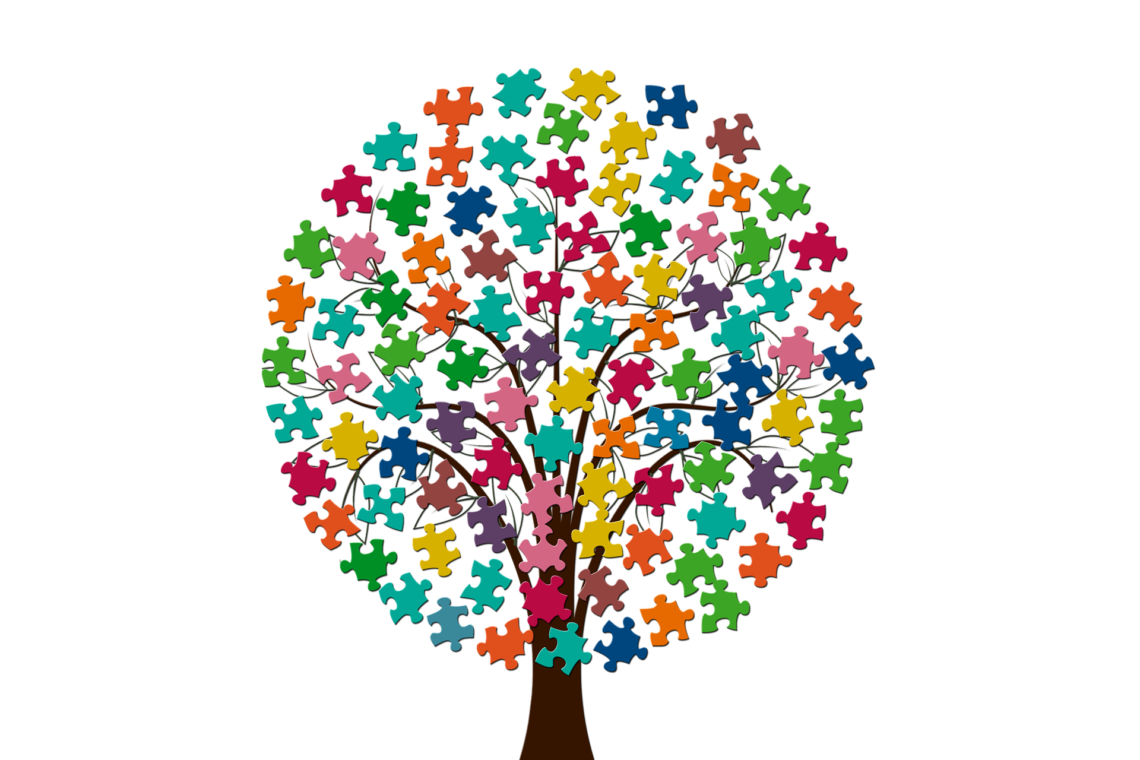
Time to Grow and Learn
When I first heard about the growth mindset this past Fall, I thought that it was missing something. In my research to learn more, I stumbled upon Duckworth’s Grit Theory and immediately felt that this was the critical missing part. Yet as time went on and I deployed these methods, I knew something was still missing. How do we get the disengaged student to actually try in the first place? According to what I have learned in this course, a missing piece is a failure to consider the environment (Harapnuik, 2019). Despite finding this missing piece, I still felt that there is still something else missing. Some of my fellow colleagues said grades were the culprit. According to these colleagues, students focus on grades overmuch to the point that learning is no longer fun and even cheating is necessary. While I can acknowledge that many students fixate on merely achieving a grade and nothing more, I do not feel that grades are the reason for a disengaged and disinterested mindset. Achieving a barely passing grade in the class or even failing is not innately a bad thing, but grades have gotten a bad rap in recent years. A quick internet search will bring thousands of articles stating that grades and testing cause students to not try. I know that feeling of failing after studying hard on a test, and it is indeed very discouraging. However, I would then pick myself up again to study harder, seek help, and that final feeling of passing the next test was always so amazingly satisfying. Why then was I so successful in moving forward under the very systems so many believe to be the culprit for apathetic students?

As I pondered these issues during my last unit of this course while reading the course materials, I returned to the dialogue of moving to the correct environment as the missing key to success. I could see the logic in that thought: an environment where the student is active, engaged in the material, and learning through authentic experiences would certainly spark interest and reinvigorate a passion for learning. However, I know what my fellow teachers would do with this information. They would implement Project Based Learning (PBL) to create the so-called correct environment. They would simply do more activities. We saw a major push for this type of classroom not even 6 years ago. But in the end, students were not engaged in their learning. Perhaps it was implementation or perhaps it was a lack of ownership from the students that caused it to fail. Regardless of the reason, I think to truly create a growth mindset with engaged students a constructivist learning environment is needed. This environment is not for the faint of heart, as an educator must start with the end goal in mind and craft the lesson in such a manner that leads the students to the enduring understandings of the lesson through the process of independent exploration. In addition, I believe that consideration for time is another key factor for a successful learning environment that creates a growth mindset among those children who often do not feel good about themselves and lack hope to achieve more than they could imagine. A learning session is too frequently taught to the so-called “average learner.” Educators base all their activities, instruction, and timeline on this imaginary learner. Over the years, educators have simply lowered the skills and expectations of this imaginary learner as actual students move further away from desired goals. Instead of moving the goalposts this way and that, educators should instead consider time as a hidden factor that blocks success. Educators try hard to create lessons to engage all students yet they fail time and again. If educators are to succeed they need to plan for the end results, allow for students to control pace, and guide their learning into a deeper critical thinking constructivist environment. This is a complex and serious task, one cannot be the new buzzword/concept of the day. Educators must know the theories and how to properly implement the entire concept at a detailed level, not just the overarching and generalized ideas. I know I am not there yet. Just as I have to take the path of deeper understanding regarding all the theories needed to create the appropriate environment for my learners, I must show my learners they too have a path to take in their journey to learn. I plan to give them the control over time, so they can understand that failure is not the end. That is, after all, the ultimate goal is learning.

I implemented this feature in my classroom in January. Students were unsure how to proceed in an environment that allowed them to fail without penalty. They practiced learning and when they failed they knew that understanding was a work in progress and began to truly grasp what I meant when I said “Yet.” Developing a growth mindset became a difficult experience for some of my learners, as they grappled with the concept that they did not need to cheat when they did not understand, nor did they need to cheat because time was of the essence. I find that individuals are interested in genuine understanding and they completely shut down when they do not understand or feel it is not worth their effort to understand. We have trained the current and previous generations to shut down because we constantly moved beyond their skill levels. Growth mindset alone is not enough to fix this issue, because “Yet” includes the concept of giving students the time to master a topic. The current education system does not allow for this time.
This lack of time consideration leads to the issue of educators not understanding how to fully implement a growth mindset as this is a very long process. This poor implementation can be illustrated by the wave of false growth mindsets across the nation as a counter to the failed self-esteem movement that came before it. As Gerstein (2015) stated this fad was just like the “Just Say No” movement from the 1980’s, ineffectually replacing actual learning with catchy slogans. In reality, growth mindset was used to perpetuate the “feel good” movement, and students were just celebrated for great effort without filling any learning gaps. Making students feel good about themselves may also not be beneficial even when educators push learners to try again and to get the correct answer. Last Fall during the course on leading organization change, I read the “Influencer: The power to Change Anything” where research showed that offering a reward made people less likely to try at something they even enjoy. My overall feelings of the growth mindset teeters back and forth on how successful I think a mindset could be regarding educational achievement. Alfie Kohn made a fantastic point regarding how praise is just a positive judgment yet a judgment nonetheless. I agree with him that we need to give feedback that does not include judgment one way or the other. We should instead have positive interactions, not judgments, with our students. We should not judge their intelligence or make them feel ignorant which is a side effect as we try to praise effort, even when we do not mean to do so.

Given the above, should we move our learners toward reigniting or adopting a Learner’s Mindset? The goal of positive interactions to induce growth mindset has been shown to have a positive effect on motivation and academic achievement in the low-performing students, especially in mathematical achievement (Sarrasin et al., 2018). In Sisk (2018), their meta analysis showed a positive relationship for students who were high-risk and economically disadvantaged benefiting from a growth mindset. Interesting to note that both research by Sarrasin (2018) and Sisk (2018) showed no significant gains for any other types of students. According to Dweck (2016), mastery-oriented growth mindset learners make greater improvements in their academic achievements than their performance-orientated fixed mindset peers. However, Sisk (2018) meta analysis did not support her statement. This leads me to believe that a positive mental state alone is insufficient to produce actual growth among learners, outside of those that have never been given a chance to hope in the first place. According to Duckworth et al., (2007), “The achievement of difficult goals entails not only talent but also the sustained and focused application of talent over time.” This is the essence of Grit Theory. Often educators tell their students to simply work harder, be more dedicated, and they can be successful. However, the key word in Grit Theory is talent, and in this context, talent is one’s intrinsic ability to be successful coupled with the determination to see it through. Interestingly, grit is more positively correlated to success than even IQ (Duckworth, 2007), but without the growth mindset many sit on the sidelines. This is due in part to educators simply demanding rigid work and practice for the sake of practice. Vince Lombardi, the great American football coach, said it best, “Practice does not make perfect, only perfect practice makes perfect,” and a great number of students simply cannot practice perfectly. Under the current education systems, assignments keep moving forward, but the learners are unable to complete the assignments due to a lack of mastery of the previous material. As such, a pure Grit Theory is also insufficient. Therefore, there is a need to strike an appropriate balance between the positive and progressive mental states of growth mindset and the dedicated work ethic of grit theory with great considerations to constructing the appropriate environment.

As I move forward in my masters program and my career as an educator, I see myself as becoming a coach/mentor that blurs the line of when exactly a standard should be met but not the standard itself. I want to create an environment that gives students the opportunity to learn. This requires an environment that encourages the base growth mindset that everyone can learn. I know that they will have to work hard to achieve success, so the concept of just sticking to something is important. However, creating a classroom where students grit through memorizing a bunch of useless factors or completing busy work is not going to foster students’ mindset and determination. This hybridized approach will attempt to avoid the excesses of any one theory while staying firmly fixed on providing students their most essential resource: time to grow and learn.
References:
Dweck, C. (2016, January 13). What having a “growth mindset” actually means. Harvard Business Review. Retrieved March 4, 2023, from https://hbr.org/2016/01/what-having-a-growth-mindset-actually-means
Duckworth, A. L., Peterson, C., Matthews, M. D., & Kelly, D. R. (2007). Grit: Perseverance and passion for long-term goals. Journal of Personality and Social Psychology, 92(6), 1087-1101. https://doi.org/10.1037/0022-3514.92.6.1087
Faries, D. (2022). Script. davinafares.com. Retrieved March 5, 2023, from https://davinafaries.com/wp-content/uploads/2022/11/easyroad3.png
Geralt. (2016). Puzzle Tree. Pixabay.com. Retrieved March 5, 2023, from https://pixabay.com/illustrations/to-learn-teacher-woman-a-book-read-1468406/
Grenny, J., & Patterson, K. (2013). Influencer: The power to change anything. McGraw-Hill Professional.
Harapnuik, D. (2019, April 5). How to Grow a Growth Mindset. Harapnuik.org. Retrieved March 4, 2023, from https://www.harapnuik.org/?p=7955
Sarrasin, J. B., Nenciovici, L., Foisy, L.-M. B., Allaire-Duquette, G., Riopel, M., & Masson, S.
Sarrasin, J. B., Nenciovici, L., Foisy, L.-M. B., Allaire-Duquette, G., Riopel, M., & Masson, S. (2018). Effects of teaching the concept of neuroplasticity to induce a growth mindset on motivation, achievement, and brain activity: A meta-analysis. Trends in Neuroscience and Education, 12, 22–31. https://doi.org/10.1016/j.tine.2018.07.003
Sisk, V. F., Burgoyne, A. P., Sun, J., Butler, J. L., & Macnamara, B. N. (2018). To what extent and under which circumstances are growth mind-sets important to academic achievement? Two meta-analyses. Psychological Science, 29(4), 549–571. https://doi.org/10.1177/0956797617739704
Vectors. (2013). Geometry Mathematics. Pixabay. Retrieved March 5, 2023, from https://pixabay.com/vectors/geometry-mathematics-155757/.
Warton School. (2022). Carol Dweck & Angela Duckworth: Individual & Organizational Mindset | 2022 Future of Work Conference. YouTube. Retrieved March 5, 2023, from https://youtu.be/gDeUMy-IMmE.





